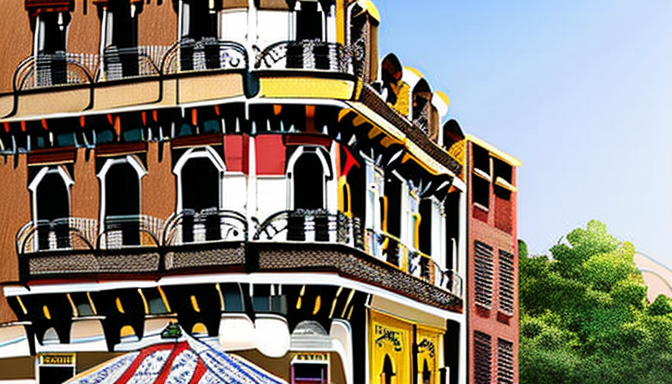Karachi, a bustling metropolis, is a city that tells a story. A story woven through its streets, buildings, and the very fabric of its society. To understand Karachi today, we must journey back to its colonial past. During the British rule, significant policies were implemented that shaped the city’s identity. Have you ever walked through the streets of Karachi and marveled at the stunning architecture? Much of it reflects the British influence. Buildings like the Frere Hall and the Mohatta Palace stand as testaments to an era gone by, blending European styles with local elements.
The British introduced modern urban planning, which laid out Karachi’s streets in a grid pattern. This was revolutionary at the time but also created a divide. The affluent areas were developed while others were neglected. The social dynamics of the city were forever altered. The policies not only affected infrastructure but also governance. The local administration was structured to favor British interests, leading to a lasting impact on how Karachi is governed even today.
So, what does this mean for Karachi now? The remnants of these policies are visible in various aspects:
- Urban Development: The layout of the city still reflects colonial planning.
- Governance: Many administrative practices trace back to the British era.
- Cultural Dynamics: The blend of cultures continues to shape the city’s identity.
In essence, the legacy of British colonial policies is a double-edged sword. While they brought about modernization, they also sowed seeds of inequality. Karachi today is a vibrant mix of cultures, but the shadows of its past loom large. Understanding this history is crucial for anyone looking to grasp the complexities of this incredible city.
Historical Overview of British Colonial Policies
The story of Karachi is deeply intertwined with its colonial past. When the British arrived, they saw a bustling port city with immense potential. Their policies were not just about control; they aimed to reshape the urban landscape. Imagine a city where every corner tells a tale of transformation.
During the British rule, several key policies were implemented that would lay the foundation for modern Karachi. These included:
- Urban Planning: The British introduced systematic urban planning. They designed roads, parks, and public buildings, creating a grid-like pattern that still defines parts of the city today.
- Infrastructure Development: Railways and ports were developed to facilitate trade. The Karachi Port became a vital hub, boosting the economy and attracting migrants.
- Education Reforms: Schools were established, promoting Western education. This shift influenced the local culture and introduced new ideas.
British-era architecture still stands tall, with buildings like the Frere Hall and the Empress Market showcasing a blend of Gothic and Indo-Saracenic styles. These structures are more than just bricks and mortar; they are symbols of a time when Karachi was a melting pot of cultures.
Today, as we walk through the streets of Karachi, we can feel the echoes of its colonial past. The policies implemented during that era have shaped not just the city’s infrastructure, but also its identity. Karachi is a living testament to how history influences the present and future.

Modern Implications of Colonial Legacy
Karachi, a bustling metropolis, wears its colonial past like a badge of honor, yet it also grapples with the shadows of British policies. The architecture is a telling sign of this legacy. Walk through Saddar or Frere Hall, and you’ll see stunning buildings that echo the grandeur of the British era. These structures, while beautiful, also highlight a divide. They symbolize the wealth and power of a few, contrasting with the struggles of many.
The policies from the British rule laid the groundwork for the city’s complex socio-economic landscape. For instance, the focus on infrastructure development during colonial times prioritized roads and railways that connected the port to the interior, benefiting trade but leaving many neighborhoods underserved. Today, Karachi faces challenges like traffic congestion and inadequate public transport. Isn’t it ironic that the very roads built to enhance connectivity now contribute to chaos?
Moreover, the governance structures established during colonial times still linger. The bureaucratic systems put in place have evolved, yet they often reflect the same inefficiencies. Corruption and red tape can feel like inherited traits. The city’s residents frequently navigate a maze of regulations that seem outdated. This colonial hangover affects daily life, from accessing basic services to participating in civic matters.
In essence, the legacy of British colonial policies in Karachi is a double-edged sword. While it has contributed to the city’s unique identity, it also presents ongoing challenges. Understanding this history is crucial for shaping a better future. How can Karachi embrace its past while forging a path forward?
Frequently Asked Questions
- How did British colonial policies shape Karachi’s urban development?
The British implemented policies that prioritized infrastructure, such as roads and railways, which facilitated trade and movement. This laid the groundwork for Karachi’s transformation into a bustling port city, influencing its layout and growth even today.
- What are the modern implications of the colonial legacy in Karachi?
Today, remnants of British governance can still be seen in Karachi’s administrative structures and legal frameworks. Issues like urban planning and social inequality often trace back to decisions made during the colonial era, revealing a complex relationship between past and present.
- How have British policies influenced Karachi’s socio-economic landscape?
British policies created a class system that favored certain groups, leading to disparities that persist in Karachi’s economy. The focus on export-oriented industries during colonial times has shaped the city’s economic activities and labor market in contemporary society.
- Are there any cultural impacts of British colonialism visible in Karachi?
Absolutely! The British left a lasting cultural imprint, from language to architecture. English is widely spoken, and many historical buildings reflect colonial architectural styles, showcasing a blend of local and British influences that define Karachi’s identity today.